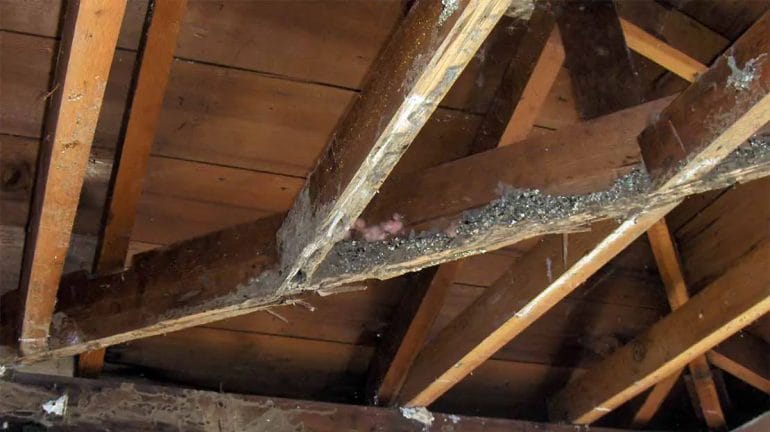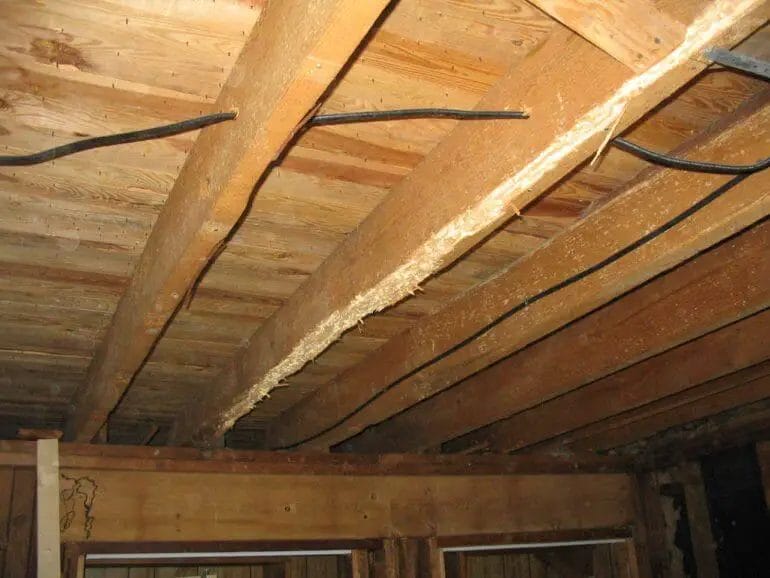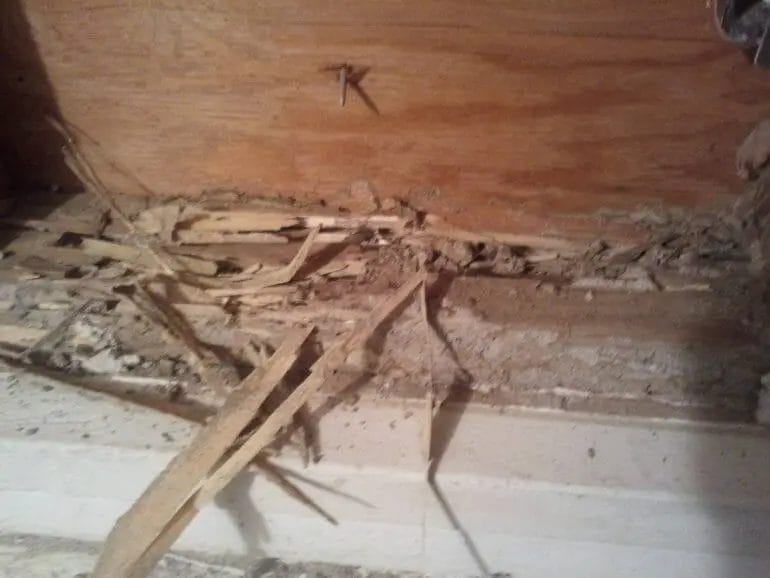If you’re dealing with termite damaged wood, don’t despair! It’s essential to address this issue promptly to prevent further destruction. Repairing termite damaged wood requires a strategic approach to ensure the structural integrity of your property is restored. In this guide, we will walk you through the step-by-step process of repairing termite damaged wood, from assessing the extent of the damage to implementing effective treatment and restoration techniques. With the right knowledge and tools, you can successfully repair termite damaged wood and protect your property from future infestations.

DIY Techniques for Repairing Termite Damaged Wood
Termites are a homeowner’s nightmare, as they can cause extensive damage to the structure of a house, especially wood. If you’ve discovered termite damage in your home, it’s important to address the issue promptly to prevent further deterioration. While hiring a professional may be the best course of action for severe infestations, there are DIY techniques you can try for repairing termite damaged wood. In this section, we will explore some effective methods that you can use to repair and restore the integrity of termite damaged wood.

1. Assess the Extent of Damage
The first step in repairing termite damaged wood is to assess the extent of the damage. Inspect the affected wood thoroughly to determine the severity of the infestation. Look for signs of termite activity such as pencil-sized holes, hollowed-out wood, and termite droppings. It’s crucial to identify the extent of the damage to decide whether the wood can be salvaged or needs to be replaced.
2. Treat the Infested Wood
Prior to repairing termite damaged wood, it’s essential to eliminate any remaining termites to prevent further destruction. Use an appropriate termiticide treatment to treat the infested wood. Apply the treatment as instructed on the product label, ensuring that all affected areas are thoroughly covered. This will help in eradicating any remaining termites and preventing reinfestation.
3. Remove Damaged Wood
If the termite damage is extensive and beyond repair, it’s necessary to remove the damaged wood. Carefully remove the affected sections of wood using a chisel or a saw. Make sure to remove all infested wood, as even a small section left behind can lead to future problems. Take necessary precautions to avoid spreading termite eggs or debris to other areas of your home.
4. Reinforce with Epoxy Wood Filler
Once the damaged wood has been removed, it’s time to reinforce the remaining structure using epoxy wood filler. Epoxy fillers are ideal for repairing termite damaged wood as they provide a strong bond and are resistant to future termite attacks. Prepare the epoxy filler according to the manufacturer’s instructions and apply it to the affected areas. Use a putty knife to shape and smooth the filler, ensuring a seamless finish.
5. Sand and Stain
After the epoxy filler has dried, sand the repaired areas to achieve a smooth surface. Start with coarse-grit sandpaper and gradually move to finer grits for a polished finish. Once sanding is complete, apply a wood stain that matches the color of the surrounding wood. This will help blend the repaired sections seamlessly with the rest of the wood, making the termite damage less noticeable.
6. Apply a Protective Sealant
To further protect the repaired wood and prevent future termite attacks, apply a protective sealant. Use a high-quality wood sealer or varnish to coat the repaired areas and the surrounding wood. This will create a barrier against termites and moisture, enhancing the durability and longevity of the repaired wood.
7. Regular Maintenance
Once you have repaired the termite damaged wood, it’s crucial to implement regular maintenance practices to prevent future infestations. Conduct routine inspections to detect any signs of termite activity early on. Keep the wood surfaces clean and dry, as moisture attracts termites. Consider using termite-resistant wood or treating the wood with termite repellents for added protection.
In summary, repairing termite damaged wood can be a challenging task, but with the right techniques and materials, it is possible to restore the integrity of the affected wood. Assess the extent of damage, treat the infested wood, remove damaged sections, reinforce with epoxy filler, sand and stain, apply a protective sealant, and implement regular maintenance practices to prevent future infestations. By following these DIY techniques, you can effectively repair termite damaged wood and safeguard your home from further damage.

Effective Products and Methods for Treating Termite Infestations
Termite infestations can cause significant damage to your property if left untreated. These small, wood-eating insects can quickly multiply and cause structural damage that can be costly to repair. If you suspect a termite infestation, it’s important to take immediate action to eliminate the pests and prevent further damage. In this section, we will discuss some effective products and methods for treating termite infestations.
1. Liquid Termiticides
Liquid termiticides are one of the most common and effective methods for termite control. These products are typically applied to the soil around the foundation of the infested structure or directly injected into termite galleries. Liquid termiticides create a chemical barrier that repels or kills termites, preventing them from entering or leaving the treated area. Some popular liquid termiticides on the market include Termidor, Taurus SC, and Dominion 2L.
2. Termite Baits
Termite baits are another popular method for treating termite infestations. These baits consist of cellulose material infused with a slow-acting pesticide. They are strategically placed in the ground around the infested area to attract termites. Once termites consume the bait, they carry the pesticide back to their colony and spread it to other termites, ultimately eliminating the entire colony. Examples of termite bait products include Advance Termite Bait System and Spectracide Terminate Termite Detection and Killing Stakes.
3. Foam Termiticides
Foam termiticides are a targeted approach for treating localized termite infestations. These products come in an aerosol can and are injected directly into termite galleries, voids, or wall voids. The foam expands, allowing it to reach deep within the infested areas and effectively eliminate termites. Foam termiticides like Termidor Foam and Alpine Ant and Termite Foam are commonly used by professionals for spot treatments.
4. Heat Treatment
Heat treatment, also known as thermal eradication, is a non-chemical method for eliminating termites. This method involves raising the temperature of the infested area to a lethal level for termites. Heat treatment is effective in killing termites in the treated area and can also reach hidden colonies within the structure. This method is best suited for localized infestations and may require professional equipment and expertise.
5. Wood Treatments
Wood treatments can be used as a preventive measure or to treat early-stage termite infestations. These treatments involve applying wood preservatives or insecticides directly to the wood surfaces, creating a barrier that repels or kills termites. Wood treatments are commonly used during construction or renovation to protect new or exposed wood. Examples of wood treatment products include borate-based solutions like Timbor and Bora-Care.
6. Hiring Pest Control Professionals
While some termite treatments can be done by homeowners, severe or extensive infestations may require the expertise of professional pest control companies. These professionals have the knowledge, experience, and access to specialized equipment to effectively identify, treat, and prevent termite infestations. They can determine the most suitable treatment method based on the severity of the infestation and the type of termites involved.
Summary
Termite infestations can be a serious threat to your property, but there are several effective products and methods for treating and preventing these pests. Liquid termiticides, termite baits, foam termiticides, heat treatment, wood treatments, and professional pest control services are all viable options depending on the severity of the infestation. It’s important to take immediate action and choose the most appropriate treatment method to protect your property from further damage.

Professional Termite Damage Repair: When to Call in the Experts
Termites are notorious pests that can cause significant damage to homes and buildings. These tiny insects feed on wood and other cellulose materials, making them a threat to the structural integrity of any property. If you suspect termite damage in your home, it’s important to take immediate action to prevent further destruction and protect your investment.
While there are DIY methods available for termite control, it’s crucial to understand when it’s time to call in the experts. Hiring a professional termite damage repair service can provide you with the expertise and resources needed to effectively address the issue. In this section, we will explore the signs that indicate the need for professional assistance and discuss the benefits of hiring experts.
Signs of Termite Damage
Identifying termite damage early on is essential for minimizing the impact on your property. Here are some common signs that indicate the presence of termites:
- Visible tunnels or mud tubes: Termites build tunnels and mud tubes to protect themselves from predators and maintain moisture levels. These tubes can be found on walls, foundations, or other wooden structures.
- Hollow-sounding wood: If you tap on wooden surfaces and hear a hollow sound, it may indicate termite damage. Termites consume wood from the inside out, leaving a hollowed-out appearance.
- Warped or sagging floors: As termites damage the wooden subfloor, it can cause floors to become uneven or sag. This is especially noticeable in laminate or hardwood flooring.
- Piles of discarded wings: When termites swarm, they shed their wings. Finding piles of discarded wings near windows, doors, or other entry points is a clear indication of a termite infestation.
- Tight-fitting doors or windows: Termite damage can cause doors and windows to become misaligned or difficult to open and close properly.
Benefits of Hiring Professional Termite Damage Repair Services
While DIY termite control methods may seem cost-effective, they often fall short when it comes to effectively eliminating termites and repairing the damage. Here are the key benefits of hiring professional termite damage repair services:
- Expertise and Knowledge: Professional termite repair technicians have extensive knowledge of termite behavior, damage assessment, and treatment options. They can accurately identify the extent of the infestation and develop a targeted plan for eradication.
- Specialized Tools and Equipment: Professionals are equipped with specialized tools and equipment that are necessary for thorough termite inspection and repair. This ensures a more efficient and effective treatment process.
- Comprehensive Solutions: Professional termite damage repair services offer comprehensive solutions that not only eliminate termites but also address the underlying causes of the infestation. They can provide treatments to prevent future termite attacks and protect your property in the long term.
- Time and Cost Savings: While DIY methods may seem cheaper initially, they often result in recurring infestations and costly repairs. Professional services can save you time and money by providing a permanent solution to your termite problem.
- Peace of Mind: Hiring professionals gives you peace of mind, knowing that the termite infestation will be handled efficiently and effectively. They provide warranties and guarantees for their work, ensuring that you are protected in case of any issues.
In summary, when it comes to termite damage repair, it’s important to recognize when professional assistance is necessary. By hiring experts, you can benefit from their knowledge, specialized tools, comprehensive solutions, and the peace of mind that comes with a job well done. Don’t hesitate to contact a professional termite damage repair service if you suspect termite infestation in your property.
Preventing Future Termite Damage: Tips for Long-lasting Wood Protection
Wood is a versatile and popular material used in various construction projects. However, one common concern when it comes to wood is termite infestation. Termites can cause extensive damage to wooden structures, compromising their integrity and requiring costly repairs. Thankfully, there are preventive measures that can be taken to protect wood from termites and ensure its long-lasting durability. In this section, we will explore some effective tips for preventing future termite damage.
1. Regular Inspections
Regular inspections are essential for detecting termite activity before it becomes a major problem. Inspect your wooden structures, such as decks, fences, and wooden furniture, at least once a year. Look for signs of termite infestation, including tiny holes in the wood, mud tubes on the surface, or hollow-sounding wood when tapped. If you notice any signs of termites, it is crucial to take immediate action by contacting a professional pest control service.
2. Reduce Moisture Levels
Termites thrive in moist environments, so reducing moisture levels around your wooden structures can help deter their infestation. Ensure proper drainage in your yard and fix any leaks or water accumulation issues promptly. Avoid direct contact between soil and wood by creating a gap or using concrete or metal barriers. Additionally, make sure your wooden structures are properly ventilated to prevent moisture buildup.
3. Use Treated Wood
Using treated wood is an effective preventive measure against termite damage. Treated wood is treated with chemicals that repel or kill termites upon contact. When planning any construction or renovation project involving wood, opt for pressure-treated or termite-resistant wood. These types of wood have been treated with chemicals that significantly reduce the risk of termite infestation.
4. Apply Termite Control Products
There are various termite control products available in the market that can be applied to wood surfaces for added protection. These products typically contain chemicals that repel or kill termites, creating a barrier of defense around the wood. Consult with a professional pest control expert to determine the most suitable termite control product for your specific needs.
5. Maintain Proper Wood Care
Maintaining proper care for your wooden structures is vital for their longevity and resistance against termite damage. Regularly clean and seal your wood surfaces to prevent moisture absorption. Apply a protective sealant or stain to create a barrier against termites. Keep your wood surfaces well-maintained, and promptly address any signs of decay or damage.
6. Professional Termite Treatment
While preventive measures can significantly reduce the risk of termite damage, it is advisable to seek professional termite treatment periodically. Professional pest control services have the expertise and equipment to effectively treat and protect your wooden structures from termite infestation. They can perform thorough inspections, apply professional-grade termite control products, and offer long-term protection solutions.
In summary, protecting wood from termite damage requires a proactive approach and regular maintenance. By conducting regular inspections, reducing moisture levels, using treated wood, applying termite control products, maintaining proper wood care, and seeking professional termite treatment, you can ensure the long-lasting durability of your wooden structures. Remember, prevention is key to avoiding costly repairs and preserving the beauty and functionality of your wood-based construction projects.
FAQs
How can I repair termite damaged wood?
To repair termite damaged wood, first, eliminate any remaining termites by hiring a professional exterminator. Then, remove the damaged wood and replace it with new wood of the same size and type. Ensure the surrounding area is also treated for termites, and consider applying a wood preservative to prevent further infestation.
Can I repair termite damaged wood myself?
While it’s possible to repair termite damaged wood yourself, it is recommended to hire a professional for best results. They can properly assess the extent of the damage, treat for termites, and ensure the repair is done correctly. DIY repairs may not effectively eliminate termites and could lead to further damage.
How can I prevent future termite damage to wood?
To prevent future termite damage to wood, keep the surrounding area free from moisture by fixing leaks and improving drainage. Regularly inspect and maintain the wood for any signs of termites. Use termite-resistant materials when building or replacing wood structures, and consider applying a termite control treatment as a preventive measure.
Conclusion:
In conclusion, knowing how to repair termite damaged wood is crucial in preserving the structural integrity of your property. By identifying the signs of termite infestation early on and taking immediate action, you can prevent further damage and avoid costly repairs. It is recommended to consult with a professional exterminator or a licensed contractor who specializes in termite damage repairs. Remember to inspect your property regularly, apply preventive measures, and address any signs of termites promptly. By doing so, you can protect your investment and ensure the longevity of your wooden structures.